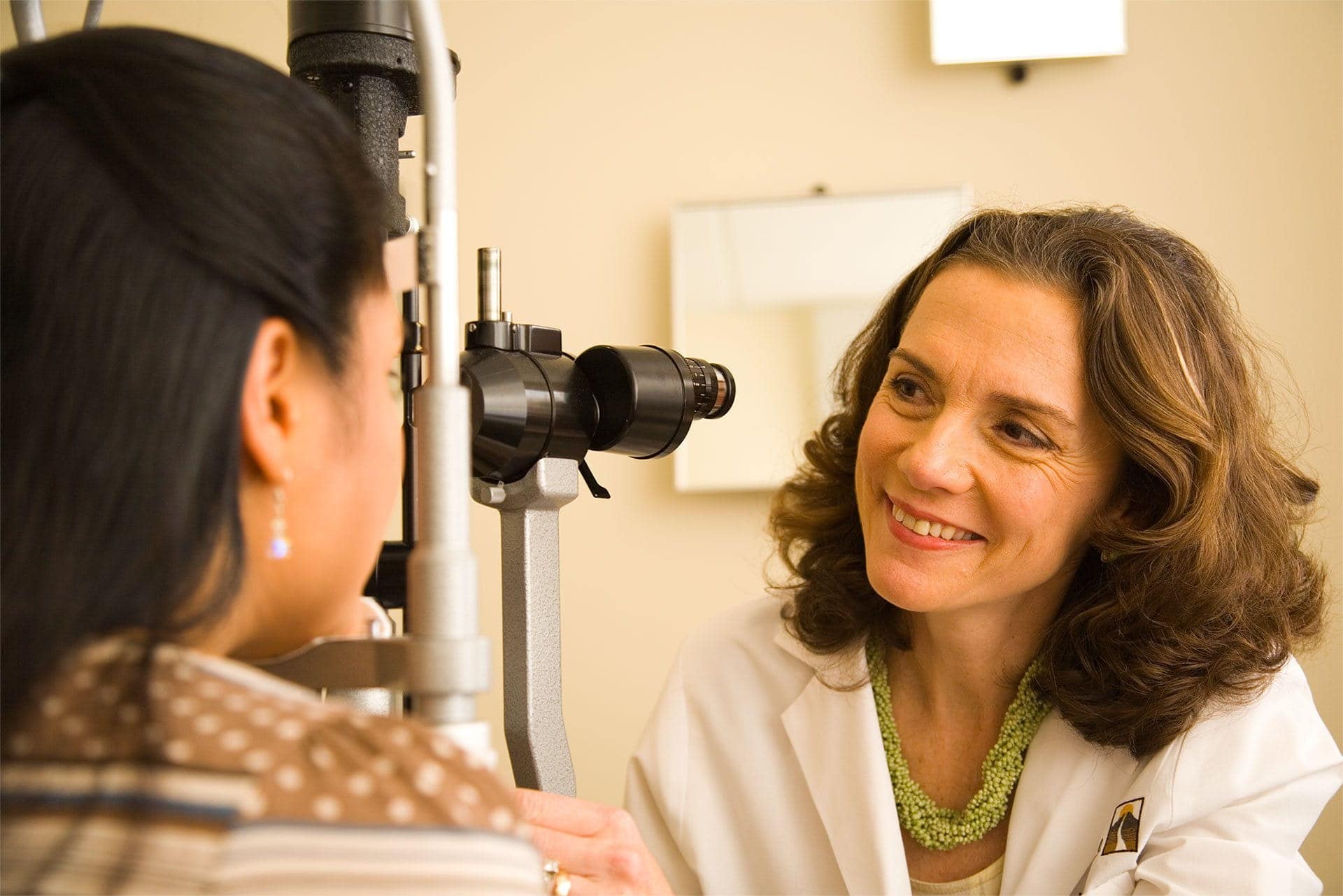
In 1998, Dr. Jenkins was the first to do Laser-Assisted In Situ Keratomileusis (LASIK) in Hawaii. She was a pioneer in laser vision correction and has been named one of the top 100 LASIK surgeons in the United States. Since 1998, she has performed tens of thousands of LASIK and PRK procedures. Dr. Jenkins and her staff are active in staying current with the latest technology for the creation of the flap and reshaping the cornea. With Dr. Jenkins’ years of experience, she will determine the best treatment plan to give you excellent vision.
LASIK
LASIK, short for laser-assisted-in-situ keratomileusis, is the most commonly performed laser eye procedure in the world. It is one of the safest and most effective ways to correct vision. Dr. Tyrie Jenkins was the first to perform LASIK in Hawai’i in 1998. Through the years, Dr. Jenkins has used only the best, most state-of-the-art technology and techniques to give her patients their optimal vision. Currently, Dr. Jenkins utilizes the WaveLight Refractive Suite. This advanced system provides personalized treatments with an increased level of precision, speed, and accuracy to achieve outstanding visual outcomes.
PRK
While the goal of Photo Refractive Keratectomy (PRK) is the same as LASIK, the procedure is different. A laser is still applied, but no flap is created. This can be safer for people with high-risk or high contact professions and hobbies or for people whose corneas are too thin for LASIK. Studies show that long term visual outcomes are equivalent between LASIK and PRK. During your evaluation, Dr. Jenkins will discuss which is the best fit for you.
Refractive Lens Exchange (RLE)
RLE may be an option if you are not a candidate for laser vision correction. RLE is a surgical procedure that uses the same successful techniques of modern cataract surgery. RLE works by replacing your natural lens with an intraocular lens (IOL). Patients who have RLE performed will not have to have cataract surgery in the future.
The difference between standard cataract surgery and a refractive lens exchange is that cataract surgery is primarily performed to remove a patient’s cataract that is obstructing and clouding their vision, while a refractive lens exchange is performed to reduce or eliminate the need for glasses or corrective lenses.
Learn more about Refractive Surgery
WHAT ARE YOU SPENDING ON GLASSES AND CONTACTS?
You could potentially
be spending
over your lifetime
*Calculation includes $50 for contact lens solution, glasses case, and other miscellaneous items per year; $130 (per year) for a pair of prescription readers for anyone 45 years or older. Annual exams are not included in the calculation. We have factored in the average US lifespan of 79 years. Your numbers may vary.
Refractive Surgery at Jenkins Eye Care
At Jenkins Eye Care, our long-standing commitment to eye care excellence is evident through our history and the cutting-edge techniques we offer. Dr. Tyrie Jenkins set a high standard by being the first to perform LASIK surgery in Hawai’i in 1998. Since then, we have continually adopted the latest advancements in refractive surgery to provide our patients with the best possible vision outcomes.
LASIK, or Laser-Assisted-In-Situ Keratomileusis, is the most commonly performed laser eye procedure worldwide and is renowned for its safety and effectiveness. At our clinic, Dr. Jenkins employs the WaveLight Refractive Suite, a state-of-the-art system offering high levels of precision, speed, and accuracy. This technology ensures that our patients achieve outstanding visual results tailored to their specific needs.
Another option we offer is Photo Refractive Keratectomy (PRK), which serves the same goal as LASIK but employs a different procedure. Instead of creating a corneal flap as in LASIK, PRK directly applies a laser to the cornea. This makes it a safer choice for individuals with high-risk professions, hobbies, or thin corneas. Research shows that the long-term visual outcomes of PRK are equivalent to those of LASIK. During your consultation, Dr. Jenkins will thoroughly evaluate your condition to determine which of these procedures is the best fit for you.
For those who aren’t candidates for laser vision correction, we also provide Refractive Lens Exchange (RLE). This surgical method replaces your natural lens with an intraocular lens (IOL), making future cataract surgery unnecessary. Unlike cataract surgery, which is primarily done to remove clouded lenses, the aim of RLE is to reduce or eliminate the need for glasses or corrective lenses.
At Jenkins Eye Care, each patient receives a tailored treatment plan aligned with their unique vision requirements. If you have further questions or wish to know more about which refractive surgery option is suitable for you, we encourage you to schedule a comprehensive eye evaluation with us.



